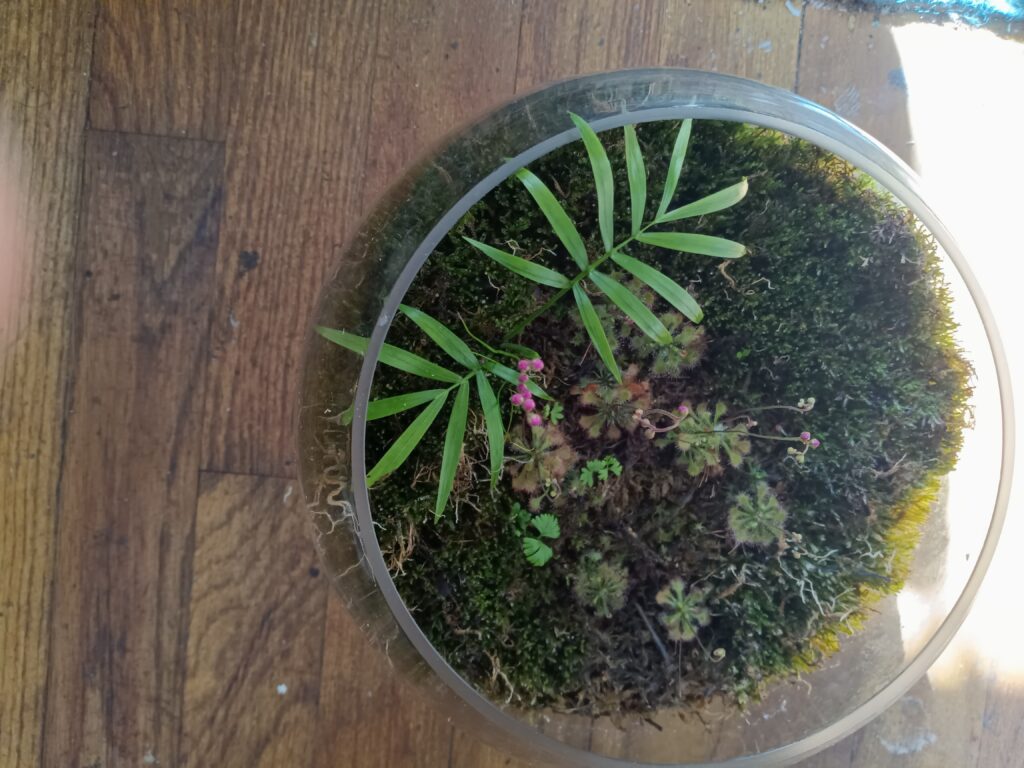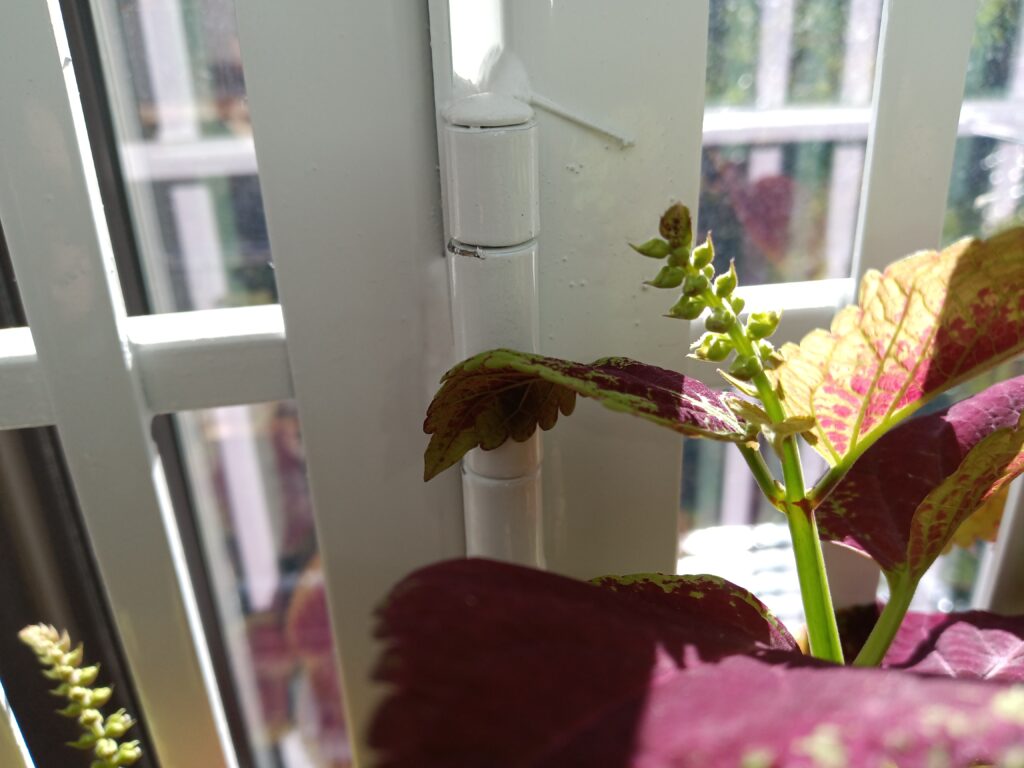This isn’t a simple topic for me to discuss, because it doesn’t always come around for all plants; or at least not for all or even most of the plants that I have or had, that I have owned to some extent.
For the most part, with natural sunlight, and clean water (obviously), plants can eventually grow long enough and eventually, they can grow and produce flowers. Given the right media for the plants to grow in, along with the water and sunlight, this can happen, naturally, over time. It’s often different for most plants, and depending on weather conditions, you will see this happen eventually. However, if they are indoors, then it may take longer.
Of course, with the advent of using grow lights, of all varieties, you can advance this result much sooner, and not simply during the standard blooming seasons. For most plants, that is usually spring and summer.
For some of the plants that I have, they don’t flower at all. This doesn’t mean that your plants’ growth isn’t a success; that success can be something other than flowering. It can be large growth, and enough growth to show that the plants are happy and content to keep on growing. That’s fine. If you have a plant that you get in a small pot, that eventually is repotted, and grows to maybe close to five or to ten times its original size, and is also healthy, I think it’s safe to say, it’s a success.
For other plants, this can happen, and flowers can also appear and bloom. Many flowers that bloom, won’t stay around for very long. They are very nice to look at, and often in the best or most ideal of conditions, the flowers may last for a few days to a week; maybe longer depending on the plant. If it continues to bloom, almost non-stop blooming for some plant varieties, once a flower goes the distance, and eventually withers and/or falls off of the plant, it often is replaced with another flower, nearest or in the same point.
I’ve seen this personally with a few plants. One of them was a plant I had for the spring and summer of 2023, the kawaii soiree catharanthus, the white peppermint variety. This plant I bought randomly, and it was already flowering. After I repotted it, it didn’t bloom that much, but after enough time passed, some days it would bloom to see flowers increase. I bought the plant with maybe three or four flowers. I’ve seen it consistently blooming to replace flowers at a near record pace. At some points, it would bloom as many as seven, eight, or nine flowers at once. I’ll admit, the environment wasn’t ideal, but it was okay, but because of the grow lights, that was enough to make this happen.
I did mention earlier, that grow lights can influence flowering in plants, and for some, settings may or may not matter. For the white peppermint, this was made apparent, with the grow light bulb setup, in a window that wasn’t facing direct sunlight.
I had something similar to some extent, with another plant, which I salvaged off of another plant, and eventually it grew larger, and large enough to push flowers now. It’s been doing this, since I placed it in, “the tank”. The humidity, and the grow lights, helped speed up this result. I’ve seen this happen, after a few months, and it’s happening even more recently. It’s not just the fact that it’s flowering, but it’s also growing tall, to the point where it’s touching the top of the fish tank.
Of course, with sundews I’ve had in the past, and currently, the spoon-leaved variety, referenced as drosera spatulata, flower stalks will appear during its blooming season, which is often summertime. Getting direct sunlight will induce this, no matter where they are set to grow.
To add to this, I’ve had other spoon-leaved sundews, but under grow lights. I’ve had them well beyond their blooming season, but because they are under grow lights, certain settings under these lights, will induce flowering. For these plants, they will produce flower stalks prior to seeing actual flowers.

The one thing we know about most (if not all) carnivorous plants, flowers are produced away from the plants, so that they are well above the plant leaves, that capture their prey. This is true for sundews, and VFTs. Yes, even pitcher plants, nepenthes and sarracenias, may do this, although I haven’t yet seen this personally, but there’s still time.
Unfortunately, for carnivorous plants, there needs to be something sacrificed, when they produce flowers, or severely compromised. Most of its energy is often focused on traps, or creating dew or fluid to capture and digest their prey. Once the flower stalk comes, then most of the energy is transferred to growing the stalks, and then the flower after it blooms. This slows down everything else, and it doesn’t always lead to the plant’s demise, but it will take longer for the main priorities to focus on capturing and consuming prey, because of the energy distribution.
This can be remedied, by allowing the flower stalk to grow maybe an inch or more, then cutting the stalk closest to the base of the plant, then you can either propagate it, or dispose of it. Successful propagation of this, I haven’t had this occur just yet; but when I do, I’ll discuss it in another journal. After cutting the flower stalk, the main priorities of the carnivorous plants can be focused on again, where the energy isn’t spent on growing flowers anymore.
(NOTE: This is mostly for the VFTs and sundews; the results may vary for other carnivorous plants.)
Other plants that have flowered quite well, are my coleus plants, where this took quite some time, because I didn’t have them under grow lights of any kind. It was direct sunlight only. This plant, which started out as two small plants. Now, as a result of propagations to produce many more additions, and repotting, eventually, this resulted in massive growth, and eventually, some flowers. These are my indoor window plants.

Understand, that most plants that can flower, will flower. Not all plant species can flower, but for the ones that do, it’s somewhat satisfying. Not all of the plants that flower will produced the best looking flowers. However, the job of those flowers, are often to attract insects that will aid in pollenating them. Just know that if you have an open window, and you all of a sudden have a problem with flies, bees, or even butterflies in your home, this is often why that is. If you have carnivorous plants, that problem can be solved, when those same bugs, end up becoming their meal; but I digress.
It’s safe to say that when you do see these plants flower, it can be satisfying to see them, but it can also show your success in growing them, to get them to this point, both naturally, and artificially.
